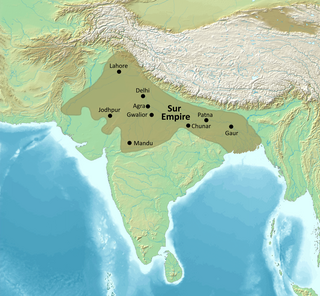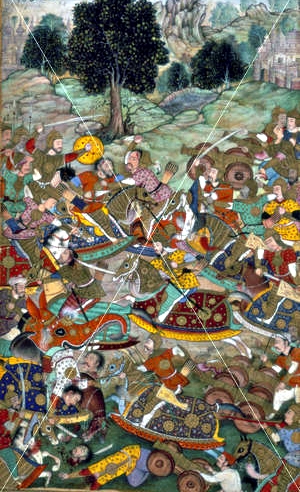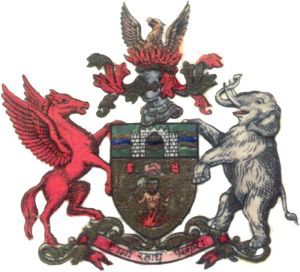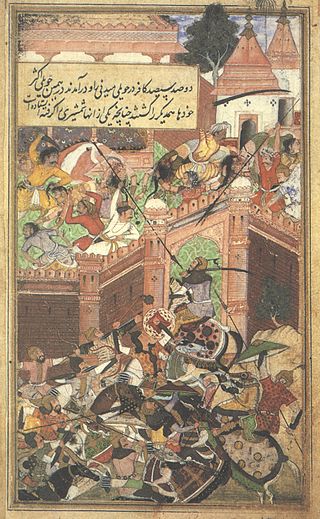
Jauhar, sometimes spelled Jowhar or Juhar, was a Hindu Rajput practice of mass self-immolation by females, both adults and children, in the Indian subcontinent to avoid capture, enslavement and rape by Turko-Persian Islamic invaders when facing certain defeat during a war. Some reports of jauhar mention women committing self-immolation along with their children. This practice was historically observed in the northwest regions of India, with most famous jauhars in recorded history occurring during wars between Hindu Rajput kingdoms in Rajasthan and the opposing Turko-Persian Muslim armies. Jauhar was only performed during war, usually when there was no chance of victory. The term jauhar often connotes jauhar-immolation. Jauhar involved Hindu Rajput women committing suicide with their children and valuables in a massive fire, in order to avoid capture and abuse in the face of inescapable military defeat. At the same time or shortly thereafter, the men would ritualistically march to the battlefield expecting certain death, which in the regional tradition is called saka. This practice was intended to show that those committing it valued their honor more highly than their lives.

Rana Sangram Singh I, popularly known as Rana Sanga, was the Maharana of Mewar from 1508 to 1528 CE. Belonging to the Sisodia Rajput dynasty, through his capable leadership, he transformed the Kingdom of Mewar into the most powerful state in northern India in the early 16th century. He controlled parts of present-day Rajasthan, Gujarat and Madhya Pradesh with his capital at Chittor. His reign was admired by several of his contemporaries, including the first Mughal Emperor Babur, who described him as the "greatest Indian ruler" of that time. The Mughal historian Abd al-Qadir Badayuni called Sanga the bravest of all Rajputs.

Sher Shah Suri, often referred to as Sultan Adil, was the founder of the Sur Empire in India. He was the regent and later sole ruler of Bihar from 1529—1540 until he defeated the Mughal Empire in 1540, founding the Sur Empire, and establishing his rule in Delhi, crowning himself as Emperor. After his accidental death in 1545 CE, his son Islam Shah became his successor. The influence of his innovations and reforms extended far beyond his brief reign. In his reign, he remained undefeated in battle, being renowned as one of the most skillful Afghan generals ever produced.

Mandu or Mandavgad is an ancient city in the present-day Mandav area of the Dhar district. It is located in the Malwa and Nimar region of western Madhya Pradesh, India, at 35 km from Dhar city. In the 11th century, Mandu was the sub division of the Tarangagadh or Taranga kingdom. This fortress town on a rocky outcrop about 100 km (62 mi) from Indore is celebrated for its architecture.

Panipat is a historic city, located in Haryana, India. It is 95 km north of Delhi and 169 km south of Chandigarh on NH-1. The three major battles fought in 1526, 1556 and 1761 took place near the city. The city is famous in India as the "City of Weavers" and "Textile City". It is also known as the "cast-off capital" due to being "the global centre for recycling textiles". Panipat is also home to a variety of manufacturing industries including wool and cotton milling, saltpetre refining, and the manufacture of glass, electrical appliances, and other products. Panipat is included in the list of Critically Polluted Industrial Areas in India. The Comprehensive Environment Pollution Index (CEPI) of the city is 71.91 as against 88.50 of Ankaleshwar (Gujarat). The fatal field of Panipat is the site of three battles that changed the course of India's history, resulting in the creation and confirmation of the Mughal Empire. The third battle led to the decisive defeat of the Maratha Confederacy in North India, which became a dominating power in Delhi by then and paved the way for the British colonial rule of India.

Chanderi, is a town of historical importance in Ashoknagar District of the state Madhya Pradesh in India. It is situated at a distance of 127 km from Shivpuri, 37 km from Lalitpur, 55 km from Ashok Nagar and about 46 km from Isagarh. It is surrounded by hills southwest of the Betwa River. Chanderi is surrounded by hills, lakes and forests and is spotted with several monuments of the Bundela Rajputs and Malwa sultans. It is famous for ancient Jain Temples. Its population in 2011 was 33,081.

The Sur Empire was an empire ruled by the Afghan-origin Sur dynasty in northern India for nearly 16 or 18 years, between 1538/1540 and 1556, with Sasaram serving as its capital. It was founded by Sher Shah Suri.

The Battle of Khanwa was fought at Khanwa on 16 March 1527. It was fought between the invading Timurid forces of Babur and the Rajput Confederation led by Rana Sanga for supremacy of Northern India. The battle was a major event in Medieval Indian history although Timurids won at Panipat but at the time, the sultanate at Delhi was a spent force that was long crumbling. To the contrary Mewar kingdom, under the able rule of Rana Sanga, had turned into one of the strongest powers of northern India. Therefore, the battle was among the most decisive battles in the Mughal conquest of northern India. It was among the earliest battles in Northern India where gunpowder was used to a great extent. The battle resulted in heavy casualties for both Timurids and Rajputs. Babur is said to have created a Pyramid with the heads of the Rajputs after the triumph in the battle.
Raja Shiladitya Tomar, also called Silhadi Tomar, was a chieftain of northeast Malwa in the early decades of 16th century Indian. He become vassal of Sanga of Mewar and remain as an ally and Sanga helped him and Medini Rai in various battles and in conquering Malwa from Sultans. He joined the Rajput Confederacy with garrison of 30,000 Rajputs at the Battle of Khanwa which was fought for supremacy of Northern India between Rajputs and Mughals.

The Chittorgarh, also known as Chittod Fort, is one of the largest living forts in India. It is a UNESCO World Heritage Site. The fort was the capital of Mewar and is located in the present-day city of Chittorgarh. It sprawls over a hill 180 m (590.6 ft) in height spread over an area of 280 ha above the plains of the valley drained by the Berach River. The fort covers 65 historic structures, which include four palaces, 19 large temples, 20 large water bodies, 4 memorials and a few victory towers.

The Battle of Ghaghra, fought in 1529, was a great battle for the conquest of India by the Mughal Empire. It followed the first Battle of Panipat in 1526 and the Battle of Khanwa in 1527. The forces of Mughal Emperor Babur of the emerging Mughal Empire were joined by Indian allies in battle against the Eastern Afghan Confederates under Sultan Mahmud Lodi and Sultanate of Bengal under Sultan Nusrat Shah.

The Malwa Sultanate was a late medieval kingdom in the Malwa region, covering the present day Indian states of Madhya Pradesh and south-eastern Rajasthan from 1401 to 1562. It was founded by Dilawar Khan, who following Timur's invasion and the disintegration of the Delhi Sultanate, in 1401, made Malwa an independent realm.

Chanderi Fort located at Chanderi in Ashoknagar District of Madhya Pradesh state in India is situated at a distance of 127 km from Shivpuri and 37 km from Lalitpur and about 45 km from Esagarh and 38 km from Mungoali It is located on a hill southwest of the Betwa River. Chanderi is surrounded by hills, lakes and forests and there are several monuments. Chanderi finds mention in Mahabharata. Shishupal was the king of Mahabharata period.

The history of human settlement in the western Indian state of Rajasthan dates back to about 100,000 years ago. Around 5000 to 2000 BCE many regions of Rajasthan belonged as the site of the Indus Valley Civilization. Kalibangan is the main Indus site of Rajasthan, here fire altars have been discovered, similar to those found at Lothal.

Ujjainiya is a clan of Rajputs found in Bihar and Purvanchal. They are originally an off-shoot of Paramara dynasty of Malwa. The Ujjainiya dynasty historically ruled over the parts of Bhojpuri region during the medieval era. They were mainly rulers and aristocrats holding major power of the region.
The Mughal–Rajput wars were a series of battles between the Rajput Confederacy and the Mughal Empire. The conflicts originated with the invasion of northwestern India by the Mughal ruler Babur, to which the head of the Rajput confederacy, Rana Sanga, offered staunch resistance.

The Battle of Chanderi or Siege of Chanderi took place in the aftermath of the Battle of Khanwa in which the Mughal Emperor Babur had defeated the Rajput Confederacy and firmly establish Mughal rule while crushing regrowing Rajput powers as the battle was fought for supremacy of Northern India between Rajputs and Mughals. On receiving news that Rana Sanga had renewed war preparations to renew the conflict with him, Babur decided to isolate the Rana by inflicting a military defeat on one of his vassals Medini Rai who was the ruler of Malwa. Consequently, in December 1527, taking a circumlocutious route Babur marched to the fortress of Chanderi in Malwa which was the capital of the kingdom of Malwa. Upon reaching Chanderi, on 20 January 1528, Babur offered Shamsabad to Medini Rai in exchange for Chanderi as a peace overture but the offer was rejected by Rai.

Medini Rai was a Rajput leader of eastern-Malwa. He ruled much of the Malwa under the lordship of Rana Sanga, who helped him in defeating Sultan of Malwa and conquering Malwa, Chanderi was his capital.
Puran Mal was king of Gidhaur in the 16th century. He was contemporary of Mughal Emperor Akbar. According to legend, he restored Baidyanath Temple of Deoghar.
The siege of Raisen was a six-month siege led by Sher Shah Suri of the Sur Dynasty in 1543 against the Rajput leader, Raja Puran Mal of Chanderi. At the end of the siege, Puran Mal surrendered to Sher Shah and was executed thereafter.














